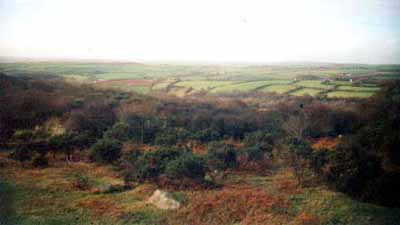 Ownership of common land has historically been vested in the lord of the manor and this still applies today in pockets throughout England and Wales. In recent times however institutions, corporations, charities and local authorities have all acquired or developed an interest in the land. In simple terms the new body of landowners have taken on the role and responsibilities associated with the lord of the manor excepting a few minor statutory provisions.
Ownership of common land has historically been vested in the lord of the manor and this still applies today in pockets throughout England and Wales. In recent times however institutions, corporations, charities and local authorities have all acquired or developed an interest in the land. In simple terms the new body of landowners have taken on the role and responsibilities associated with the lord of the manor excepting a few minor statutory provisions.
The owner has the freehold of the land subject to any rights of common and any statutory enactment's which affect the land. In legal terms the owner has "the entire dominion over the soil subject to the tenants rights of common" (Lowes V Davidson 1813) or "all that the lord has not granted remains in him". Even where the owner has no rights in the pasture he may still retain an interest in the soil, minerals, trees, bushes and turf.
The landowner is entitled to use and take products from the common only to the extent that he leaves a sufficiency of the products to satisfy the commoners rights and interests. In the past the practice of approvement occurred where a surplus area of the common may have been fenced and the rights extinguished. Current legislation has made this practice obsolete today but the landowner may still exercise his right to utilise a seasonal surplus on the common. This applies to any product of the land in addition to the most obvious one of grass. The right to a surplus of pasturage was summarised by Bayley J. in the case of Arlett versus Ellis (1827) " The lord has rights of his own reserved upon the waste: I do not say subservient to, but concurrent with, the rights of the commoners. And when it is ascertained that there is more common than is necessary for the cattle or the commoners, the lord, as it seems to me, is entitled to take that for his purposes"
The landowner may plant trees on the common or cut and remove timber and loppings from those trees, shrubs or saplings which have regenerated on the land. In doing so the rights of the commoners must be taken into consideration and care exercised to ensure a sufficiency of products including grazing and estovers is available. In practice the complexities of establishing woodland often outweighs any benefits particularly where permission is needed from the Secretary of State for the erection of any fencing associated with the works.
The owner of the soil has a reserved right to take part of the soil for any purpose including its sale. This can extend to quarrying for minerals, gravel and sand including any associated works with its extraction. Other products inciude turf, peat, potting clay, brick earth, stone and clay. As with all actions undertaken by the landowner the limiting factor is the need to retain a sufficiency of land for the commoners to exercise their rights. Excavation into the surface of the soil is allowed and interestingly the commoner has no right of abatement even if the pits created are dangerous to his animals. Whilst the landowner is exempt from the need to apply for consent (Law of Property Act 1925) for the erection of fences whilst extracting minerals he is restricted by the provisions in the Agricultural Land Act 1953.
The landowner exercises the right to take animals ferae naturae and this is often regarded as one of the more discerned benefits of land ownership. The commoner normally has no right to game unless he has been prescribed a right of piscary or occasionally a right to take rabbits. The latter is usually restricted as a right appurtenent to the needs of the household of the dominant tenement. The sporting interest in a common may be leased by the landowner who may also licence recreational events on the common including golf courses. Again the commoners rights must be fulfilled and any fencing or other works require consent from the Secretary of State under Section 194 of the Law of Property Act 1925.
The landowner is entitled to take an action against a stranger who walks, rides or `takes his carriage' upon a common where there is no legal right of access (excepting the provisions of the road Traffic Act 1988).

Many thanks to North Cornwall Heritage Coast and Countryside Service for all of the research on this page.
| Lords of the Manor | |
 |
Pencarrow Georgian House belonging to the Molesworth-St. Aubyn Family |
| The Moors | |
| The History of the Moors A brief outline of the history of Bodmin Moor from the Stone Age to present day |
 |
 |
The landscape and features Indepth information about the landscape and the factors that have had shaped it, including a map of the key features |
| Common Rights A detailed look at the history of the Rights of Common which have their roots in medieval times |
 |
| The Bodmin Moor Pages | ||||
|---|---|---|---|---|
| Natural History | Heritage | Welcome | Parishes & Villages | Tourist Information |
 |
The Bodmin Moor Pages are brought to you by |
 |
||
| www.southpenquite.co.uk | ||||